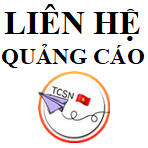In the contemporary business environment, operational efficiency is key to maintaining a competitive edge. Effective asset management plays a crucial role in this context, ensuring that resources are utilized optimally and operations run smoothly. Asset Panda, a robust asset management platform, offers powerful API integration capabilities that can significantly enhance operational efficiency. This article delves into the benefits of Asset Panda API integration and provides insights on how to leverage it for maximizing operational efficiency.
Understanding Asset Panda API Integration
Asset Panda's API (Application Programming Interface) enables seamless communication between the Asset Panda platform and other software systems. This integration facilitates the automatic exchange of data, allowing businesses to maintain real-time visibility over their assets. The API supports various functionalities such as asset tracking, maintenance scheduling, and reporting, making it a comprehensive solution for asset management.
Key Benefits of Asset Panda API Integration
1. Automated Data Synchronization:
Integrating Asset Panda with other systems ensures that asset data is automatically updated and synchronized across all platforms. This eliminates the need for manual data entry, reducing the risk of errors and ensuring data consistency. Automated data synchronization ensures that all stakeholders have access to accurate, real-time information, enhancing decision-making and operational efficiency.
2. Streamlined Workflows:
API integration automates routine tasks such as asset check-ins and check-outs, inventory management, and maintenance scheduling. By streamlining these workflows, businesses can save time and resources, allowing employees to focus on more strategic activities. Automation also reduces the likelihood of human error, further enhancing operational efficiency.
3. Real-Time Asset Tracking and Monitoring:
With API integration, businesses can track and monitor their assets in real-time. This real-time visibility enables proactive maintenance, reducing downtime and extending the lifespan of assets. It also allows for quick identification and resolution of issues, minimizing disruptions to operations.
4. Enhanced Reporting and Analytics:
Integrating Asset Panda with other systems consolidates data into a single platform, providing a comprehensive view of asset performance. Advanced reporting and analytics tools can be used to generate insights, identify trends, and make data-driven decisions. Enhanced reporting capabilities enable businesses to optimize asset utilization and improve operational efficiency.
5. Scalability and Flexibility:
Asset Panda API integration supports scalability, allowing businesses to expand their asset management capabilities as they grow. The flexible nature of the API enables customization to meet specific business needs and seamlessly integrate with existing workflows. This scalability and flexibility ensure that the integration remains effective as the business evolves.
Steps to Integrate Asset Panda API
1. Identify Integration Requirements:
Begin by identifying the specific needs and goals of your integration. Determine which systems need to be connected, what data needs to be exchanged, and the desired outcomes. This will help in selecting the appropriate API endpoints and defining the integration scope.
2. Obtain API Access:
Ensure that you have the necessary API credentials and access permissions from Asset Panda. This typically involves generating API keys or tokens that authenticate your system's access to Asset Panda's API.
3. Develop Integration Logic:
Develop the integration logic using a programming language or integration platform that supports RESTful APIs. Define data mappings, transformations, and workflows to ensure seamless data exchange between Asset Panda and other systems.
4. Test the Integration:
Thoroughly test the integration to ensure that data is accurately transferred and that all systems function as expected. Testing should include various scenarios to identify and address any potential issues before deploying the integration in a live environment.
5. Deploy and Monitor:
Once testing is complete, deploy the integration and continuously monitor its performance. Use monitoring tools to track data flows and system health, and set up alerts for any anomalies or issues. Regularly review and optimize the integration to maintain efficiency and effectiveness.
Common Use Cases for Asset Panda API Integration
1. ERP Integration:
Connecting Asset Panda with ERP systems like SAP or Oracle streamlines data exchange between asset management and financial systems. This integration improves overall operational efficiency and financial accuracy by ensuring consistent and accurate asset data.
2. IoT Integration:
Integrating Asset Panda with IoT devices enables real-time monitoring and predictive maintenance. IoT sensors provide valuable data on asset condition, usage, and environmental factors, allowing for proactive maintenance and reduced downtime.
3. Mobile Application Integration:
Allowing field technicians to access Asset Panda via mobile apps increases productivity and responsiveness. Technicians can update asset information, log maintenance activities, and receive work orders on the go, ensuring timely and accurate data capture.
4. CMMS Integration:
Integrating Asset Panda with Computerized Maintenance Management Systems (CMMS) ensures a seamless flow of information between asset tracking and maintenance management. This integration enhances maintenance planning, scheduling, and execution.
Best Practices for Successful Integration
1. Prioritize Security:
Ensure robust security measures are in place to protect sensitive asset data. Use encryption, secure authentication methods, and regular security audits to safeguard your systems and data.
2. Maintain Clear Documentation:
Document the integration process, including API endpoints, data mappings, and workflows. This documentation is invaluable for troubleshooting, future integrations, and ensuring that all stakeholders understand the integration setup.
3. Monitor Performance:
Regularly monitor the performance of the integrated systems to identify and address issues promptly. Use performance metrics and analytics to continuously optimize the integration and ensure it meets business needs.
4. Plan for Scalability:
Design the integration to handle increased data loads and accommodate future growth. Planning for scalability from the beginning ensures that the integration can evolve with your business without significant disruptions.
Asset Panda API integration https://www.makini.io/integrations/assetpanda is a powerful tool for enhancing operational efficiency. By automating data synchronization, streamlining workflows, enabling real-time asset tracking, enhancing reporting and analytics, and supporting scalability, API integration can significantly improve your asset management capabilities. By following a structured approach and adhering to best practices, businesses can achieve seamless and reliable integration, maximizing the value of their Asset Panda investment and ensuring long-term success.
Enhancing Operational Efficiency with Asset Panda API Integration




